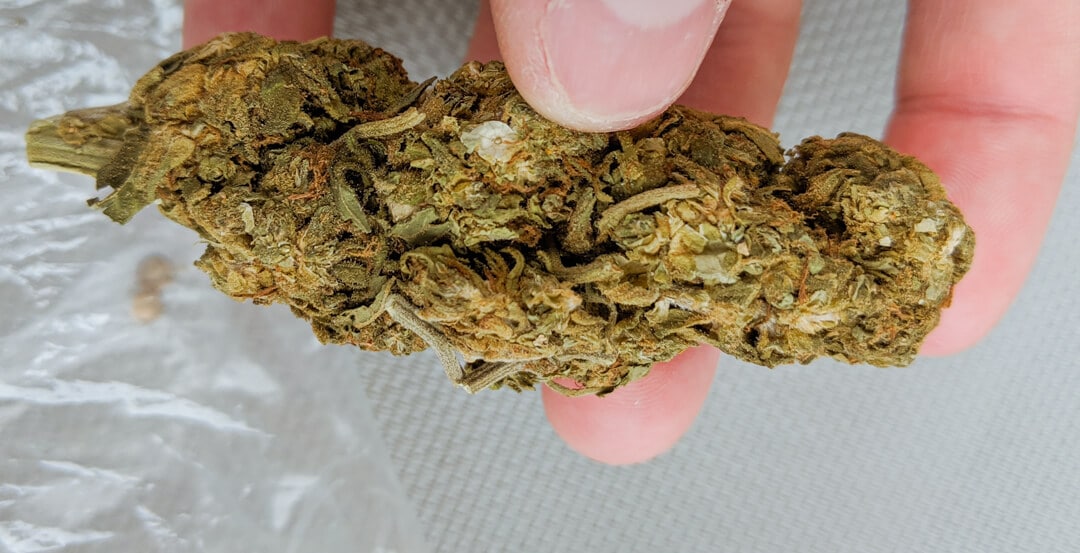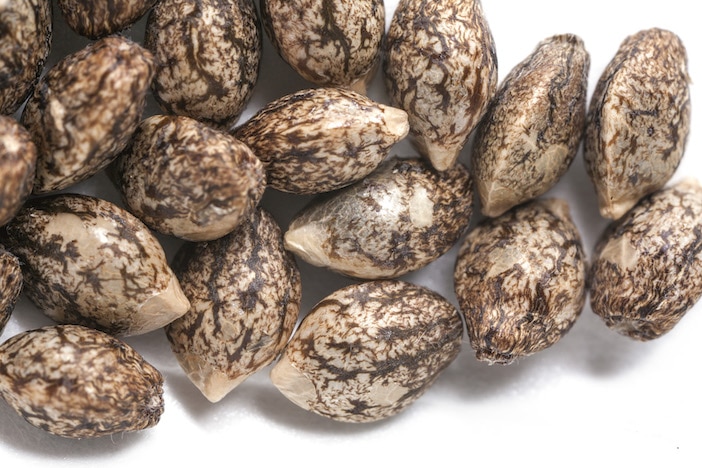
Is That Dirt Weed? How to Rate Your Cannabis Quality

Cannabis has come a long way just in the last decade. But just because there’s more high quality cannabis available doesn’t mean the dirt weed can’t still make its way into your sack.
With a little bit of knowledge you can make sure your cannabis isn’t dirt weed before you even smoke it. Using your eyes, nose and fingers you would be surprised how much you can find out about your sack of bud.
Does it look like dirt weed?
The most obvious way to tell if you have some dirt weed is to just look at it. If it’s really bad, you’ll probably be able to tell.
Yellowing leaves, brown buds, and a lack of trichomes on the outside are typically signs of a bud that is not great quality. But there are plenty of strains out there that might not look good, but still taste great and produce great effects.
For this reason, some buds take a closer look. Maybe that’s with an actual loupe or microscope to analyze the bud more closely. But for your average consumer just checking out a fresh sack of bud, that means bringing in the smell.
How does it smell?
Interestingly and luckily for us, a lot of dirt weed smells the same. There’s a signature smell that bad cannabis has that resembles old, dry hay. Like if you went to a farm, grabbed a handful of hay that has been sitting outside for the last month and took a whiff. If you get that smell from your cannabis, it could be old, moldy, or just straight low quality.
Cannabis has a lot of unique terpenes that give it different odors depending on the phenotype and genetics the plant carries. There are plenty of cannabis strains that most would consider to be high quality that have a unique, and sometimes off-putting smell. For example there’s Cat Piss, which gets its name from the unique odor it gives off.
In case you aren’t familiar, cat piss doesn’t smell good. Yet the Cat Piss strain is a well-liked and even sought-out strain by connoisseurs everywhere for its rarity. So if even weird smelling cannabis strains can still be high quality, how can you tell if you have dirt weed? Fingers.
How’s it feel?
So your looking at your sack of bud; it doesn’t look great, but it’s not brown, the smell isn’t like your usual stuff but it doesn’t smell like hay either. At this point, you could be dealing with a pretty unique strain, a mediocre bud or you’re just missing one key thing; the feel.
An important thing to remember when it comes to feeling out a bud is that dry does not always mean bad. Colorado cannabis is naturally more dry due to the lack of humidity and elevation, which makes the cannabis buds almost crumble in your fingers with a little pressure (which is great if you don’t have a grinder). California cannabis on the other hand has much more moisture, and can even be difficult to break apart and grind up (but typically burns a little more slowly). Nevertheless the importance of checking a bud with your hands shouldn’t be overlooked. If the bud feels a little too wet, break it open and check for bud rot.
There’s one thing a good bud has regardless of it’s dryness, and that’s stickiness. Trichome content will tell you a lot about your cannabis’ quality just by look and touch. Not every bud is frosty and caked in trichomes, but if you break it apart in your fingers and it leaves some sticky resin on your finger tips and more smells come out when you break it apart, that’s a good sign.
Overall, if you get a bud that looks and smells questionable, you’re probably better off just avoiding it. However if you’re in a pinch and it’s all you got, always double check to make sure it is safe to consume by cracking it open and making sure it isn’t moldy. Let’s be real, we smoked a lot worse 15 years ago, and the odds of smoking some cannabis that will actually make you sick are pretty low. But it’s always better to safe than sorry, and with your eyes, nose and fingers you can tell if a bud is good enough for you, or if it’s just some dirt weed.







